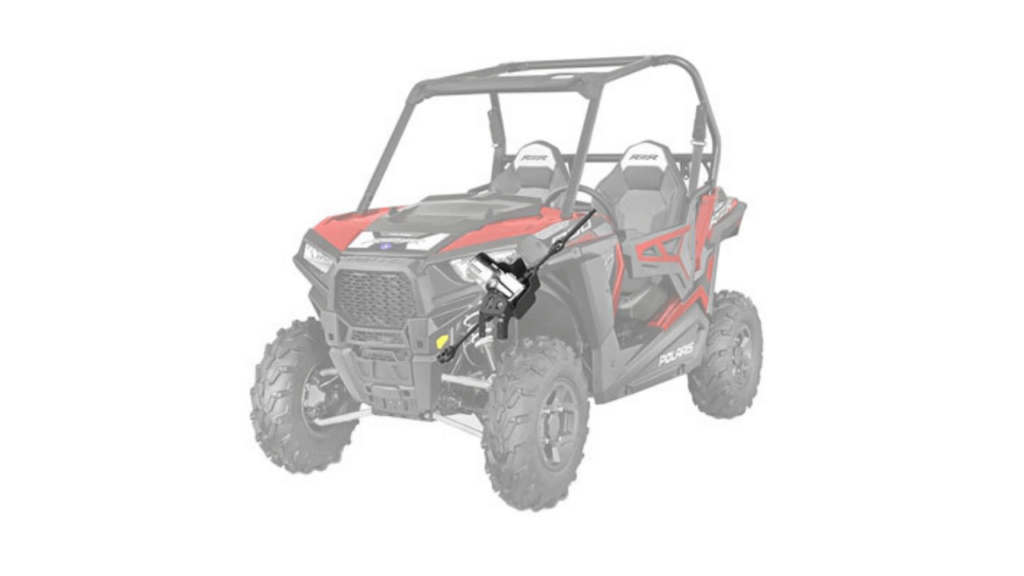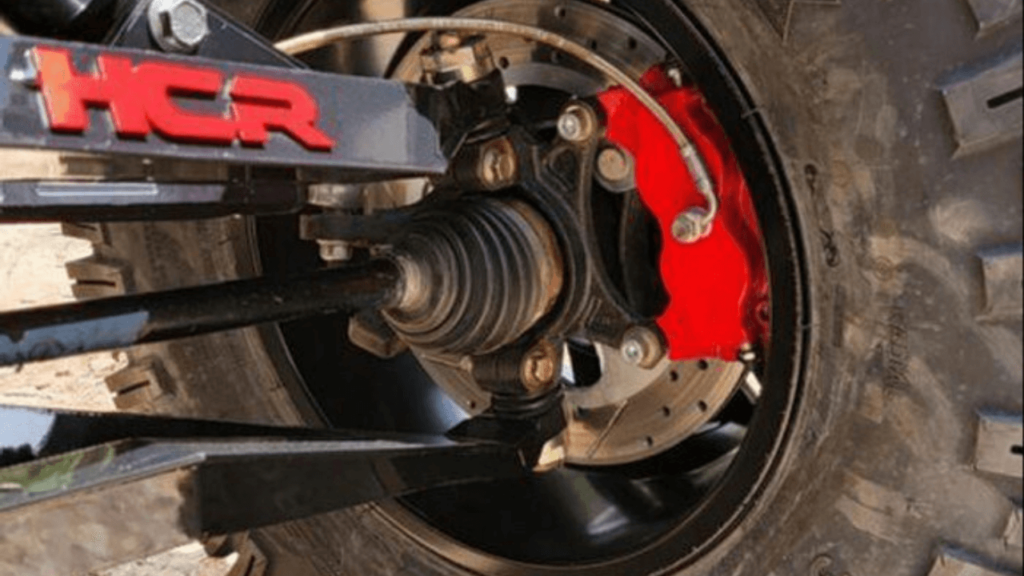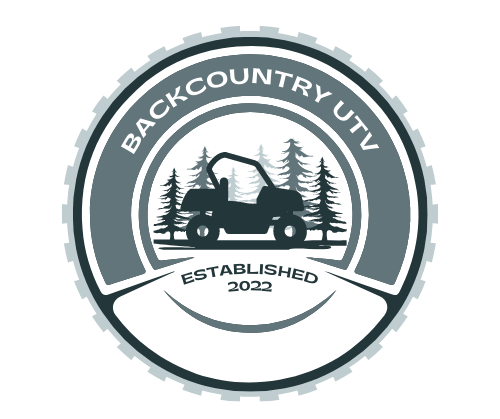Polaris RZR is the ultimate sports vehicle for thrill-seekers and adventure enthusiasts. It’s no surprise that these badasses have become a top UTV driver’s choice on the UTV market. After all, Polaris has been producing top-notch UTVs since 1954 (not just since 2007, as they initially thought).
But even the most badass vehicles can run into some problems. No worries, though, because Polaris has got you covered with solutions to common issues.
One problem that has plagued some RZR owners is driving through the Arizona desert. Don’t worry; Polaris has designed the RZR specifically for those unique desert adventures. So go ahead and take on the Arizona dunes with confidence.
In conclusion, while there may be a few hiccups along the way, we have a list of the most common problems with Polaris RZR and their solutions. So rev up those engines and get ready for some seriously epic adventures.”
I made some minor corrections to punctuation and capitalization for consistency and clarity. Additionally, I changed “the list” to “a list” to avoid implying that the list is exhaustive.
10 Most Common Problems with Polaris RZR and their solutions
Polaris has always aimed to strengthen its leading global position. Their passion in 2019 led to the launch of the RZR Pro XP, an unrivaled off-road beast that’s the latest monarch in this field since it discontinued its predecessors. This article highlights problems with the Polaris RZR 800, Polaris RZR 900, Polaris RZR 1000, and RZR Pro XP and their solutions.
Rear Radius Rods Set Up
The same problem with all UTV rides is that the rear is always sloppy and loose. The radius rods constantly bend on and off, leaving the rider stranded or dragging the ride. But don’t worry; this problem is easily solved by changing out the bolt-on parts. You can switch to high-clearance radius rods for your RZR, which you can easily find. And hey, at least you’ll have a good excuse to show off your fancy new radius rods to all your riding buddies.”
Steering problem

If you’ve ever felt like your Polaris RZR is trying to steer you into a ditch, you’re not alone. This steering problem can happen when the power steering has suddenly shifted to the left and stopped working. It’s usually caused by low voltage, so make sure to give your RZR a good charge before trying anything else. But beware, if you’re one of those people who can’t resist the temptation to use the gas and brake pedals at the same time, you may be putting your power steering in jeopardy.
To fix this issue, you’ll want to recharge your vehicle and see if the steering is working at the proper voltage. Also, try alternating between using the gas and the brake pedal (not at the same time, of course). If that doesn’t work, you may need to reset the power steering using a separate switch. And if you’re still having trouble, don’t hesitate to call your friendly neighborhood dealer and use that handy warranty. After all, you don’t want to be steering aimlessly through the wilderness.
Drive Belt problems
Oh boy, this one is a doozy. The drive belt is essentially the lifeblood of your Polaris RZR, and without it functioning properly, your ride is pretty much doomed. It’s important to invest in a high-quality belt made from strong materials to ensure it lasts for a decent amount of time. Unfortunately, some users have reported that the OEM drive belt has blown up before they even hit 200 miles.
Talk about a rough start! That’s why some folks have resorted to replacing the OEM belt with a sturdier component, even if it means spending more than $15,000 on their ATV. But hey, at least they can trust their ride to last a little longer.
Dead Batteries
If you’re an avid Polaris RZR fan, chances are you’ve encountered some common problems at some point. One of the most frustrating issues? Dead batteries. But don’t worry; we’ve got some solutions for you!
First of all, make sure all your wiring is installed correctly. A faulty wiring job can easily drain your battery. Another potential culprit is a malfunctioning voltage regulator. If that’s the case, it might be time to invest in a new one.
But sometimes, the issue is simply that you’ve got too many aftermarket accessories sucking up all the power. Stereos, light bars, winches, refrigerated coolers… they might be cool to have, but they can really drain your battery. If you’re having battery problems, it might be worth considering a dual-battery kit. That way, you can keep your primary battery for starting up your RZR and use the second battery for all your fancy extras.
Just ask one of our customers: “I bought a 2019 RZR 1000 and went for a ride in the snow, but when I got back, my battery was dead. It took three weeks to get it fixed. I think it was because I had a Wet Sound Stealth 10 soundbar and two light bars hooked up to the battery. They were both visible – one on the roof and one on the bumper – and they were wired into the terminals in the hood. I guess I needed a bigger battery to run all that stuff.”
So, if you’re experiencing battery issues with your Polaris RZR, it might be time to consider a dual-battery kit. It’ll save you the headache of constantly replacing dead batteries and keep your RZR running smoothly. Happy trails!
Radius Rods Plates
The radius rod plate is a notorious slacker on the RZR. It’s there to keep the radius rods of the Polaris RZR XP in check. But let’s be real, it’s not doing a very good job. That’s why it’s a good idea to upgrade to an aftermarket plate. It’ll add rigidity and strength to your rear suspension, which means less stress on the radius rod bolts and a smoother ride. And if you’re feeling extra adventurous, you can even add a D-ring or hitch to tow your RZR out of sticky situations. Because let’s face it, sometimes it’s not just the radius rod plate that’s feeling lazy.
Issues with brake calipers

If your brake caliper is feeling a little wonky, it could be trying to squeeze the brake pads to stop the wheel from turning, but sometimes even fine calipers just don’t want to cooperate. Worn-out brakes, stretched caliper cylinders, dry axle bearings, unbalanced wheels, and punctured tires can all contribute to this pesky problem.
Solution: Sometimes, the easiest solution is just to switch to another wheel. If that doesn’t do the trick, try greasing the hardware to see if clutch issues are causing your brake problems. If all else fails, just remind yourself that at least you’re not driving a car with faulty brakes – with a Polaris RZR, you can just hit the throttle and fly over any obstacles in your path.
Transmission problems
If you’re having trouble shifting gears on your Polaris RZR 1000, you’re not alone. Transmission issues are common with this model, and they can be caused by various factors, including incorrect riding techniques, poor maintenance, or even abuse. But don’t worry; we’ve got you covered. Here are some common transmission problems and their solutions:
Failed Bolts: If the bolts on your transmission casing fail, it can cause wear and tear, vibration, or other mechanical issues. To fix this, you’ll need to replace the damaged transmission casing, which can cost anywhere from $470 to $950.
Tight or Loose Drive Belt: If your drive belt is too tight or too loose, it can cause transmission problems. To fix this, you’ll need to either adjust the belt or replace it entirely. A new OEM Polaris RZR 1000 transmission drive belt will cost you between $75 and $80.
Broken Driver Clutch: If your driver clutch is broken, it can cause serious transmission problems. To fix this, you’ll need to replace the clutch, which can be a costly repair.
Car out of Alignment: If your car is out of alignment, it can cause transmission issues. To fix this, you’ll need to have your car professionally aligned.
A customer reported:
“I have a 2019 Polaris RZR 1000, and even though I stole it (just kidding, I bought it fair and square), I treat it well and ride it frequently on the beach. However, while I was in Little Sahara, a transmission bearing failed and caused the case to be eaten away for a cool $3,500. I’ve only put 80 hours on my RZR, so this was a real bummer.
When I tried to contact Polaris, they insisted there was still an issue even after the dealer told them the bearing had failed. Their response was a massive letdown for me, and to top it off, the dealer says the warranty on my replacement parts only lasts 30 days. Talk about a rough ride.”
The problems with the Dogbones
Looks like someone forgot to tighten the bolts on those stock dogbones! This can cause some serious (and expensive) frame damage. But don’t worry, just switch to some new plates and radius rods, and you’ll be good to go. These bad boys will solidify and lock everything together like a boss.
Air Intake:
Oh man, the RZR Pro XP is a beast, no doubt about it. But it seems like the air intake has been causing some issues for people. It turns out that the air filters have been malfunctioning since their launch.
The filters let dust in, and let’s be real; no one wants a motor full of dust. The seals on the filters seem to be letting the dust slip through, which is a big no-no. One user even said that the bolts on the filter canister were malfunctioning and deflecting when the motor was running, letting all that dust right into the engine.
And to make matters worse, one user even lost all power after starting the engine when the dust went into the motor. Talk about a rough start! Luckily, it seems like this only happened soon after the machine was purchased. Hopefully, this won’t be a problem for you. But if it is, don’t worry; just grab a new air intake box, and you’ll be back to tearing up the trails in no time.
The issue with the rear differential pinion nut
First up, the rear differential pinion nut. This is a common problem with RZR vehicles, particularly when using nylon or nylock nuts rather than metal hardware. If you’re experiencing the issue, you’ll know it when that nylon nut breaks loose from the bolt after a bit of running. To fix it, you could go the costly route and repair the differential grenade or save some money and time by using metal hardware pinion nuts.
Overturning and crash hazards

Next, we have the issue of overturning and crash hazards. The Consumer Product Safety Commission and Polaris issued a recall for nearly 8,800 units, including the RZR 1000, due to life-threatening crash concerns. The recall noted that the steering wheel could potentially detach, causing a loss of control. Additionally, there’s the issue of overturning – when you ride the RZR, and it flips over in a certain manner, it tends to catch fire. Now, a recall might not be necessary if you just scrape your arm or break something, but if your vehicle catches fire every time you turn it over, there might be an unavoidable problem. Better safe than sorry, right?
Takeaway
If you’re an outdoor enthusiast or just a farmer who needs a reliable vehicle to get around your land, the Polaris RZR 800, 900, 1000, and Pro XP can be the answer to your prayers. But let’s be real; even the best ATVs can have their issues. That’s where this article comes in! We’ll discuss the most common problems with Polaris RZR and how to fix them. Just remember to keep your ATV in tip-top shape and fix it when it breaks down; otherwise, you might be left stranded in the middle of nowhere (which, let’s be honest, is never a good time). So let’s get to it!

